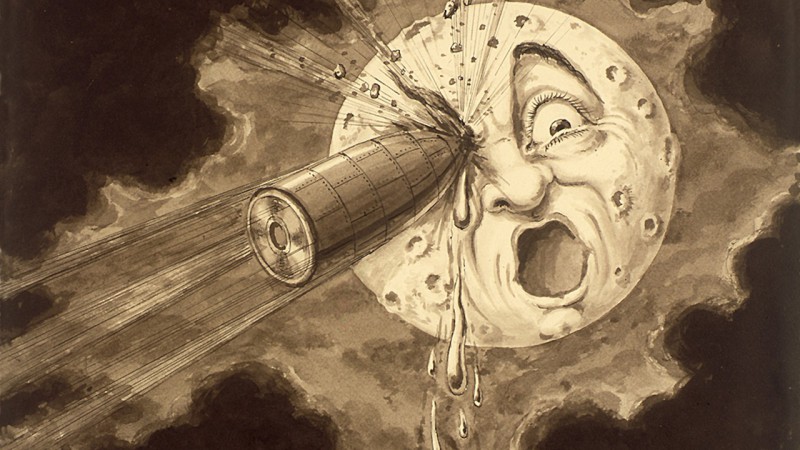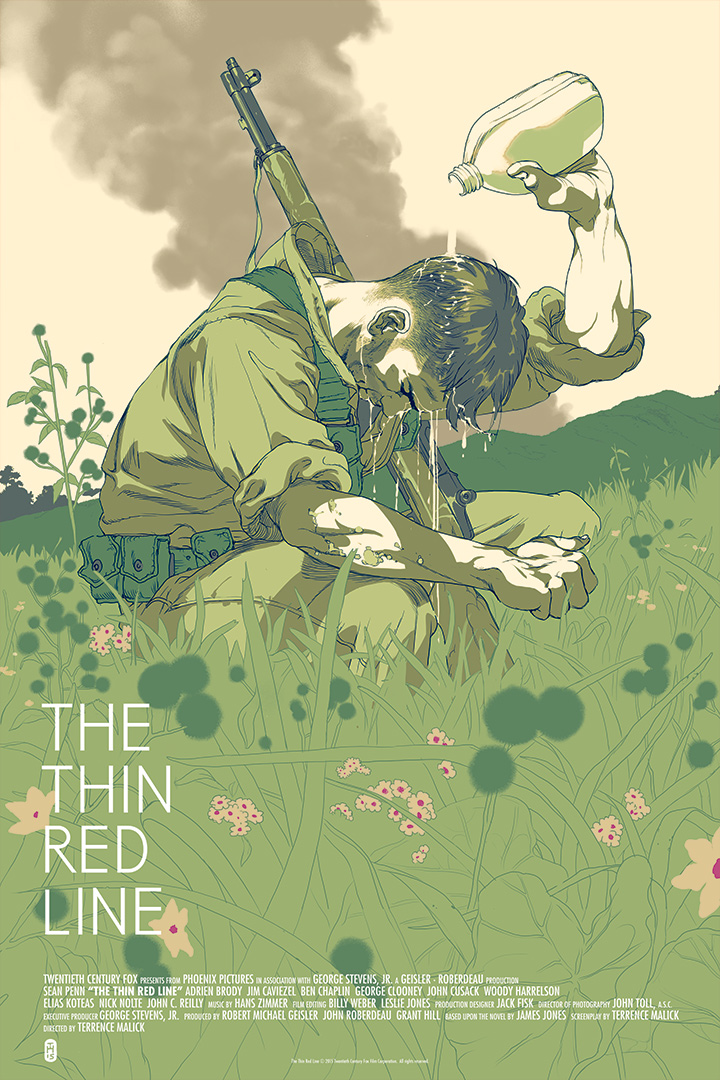Throughout this course, we’ve study films from multiple countries and cultures. From early American Hollywood to Communist Russian propaganda, to the French New Wave, we’ve covered a lot of ground in fourteen weeks. However its easy to forget the darker potential to cinema. Starting with World War 1, Germany has used film in multiple ways to convey a variety of messages—everything from ‘mountain movies’ to promoting Nazi propaganda. As Wim Wenders (German film maker) once said “Never before and in no other country have images and language been abused so unscrupulously as here [Germany].” Germany has experienced great change and turmoil in the past century. As such many German film makers struggled to move past their countries tainted past with film. The beginning of ‘New German Cinema’ steams from a country’s strong desire to remain true to its roots while thriving in pop culture.

Tom Tykwer’s Run Lola Run (1998) is fast paced, inventive, and really, really fun to watch. The moment I heard the music, and that clock started ticking I thought to myself “Yeah, this is gonna be fun.” And I was not disappointed. But I had questions after the film. Questions Barbara Kosta answered in her paper “Tom Tykwer’s Run Lola Run and the Usual Suspects: The Avert-Garde, Popular Culture and History.” The concept for ‘redoes’ or start-over scenarios is not unheard of, but the execution of Lola’s three attempts is down right fantastic. What I loved about the film was how some events were fated (the two cars crashing) and how others were by chance (the woman losing her baby, winning the lottery, or becoming an evangelist). And those running scenes! God, I wanted to get up and run too. Franka Potente really played her role well as Lola. She’s a strong character, a woman hero who is badass just as herself and kinda inspiring. Even though her and Mannie aren’t the purest of people, I wanted them to succeed (hell, at least live).
Barbara’s paper went into get depth about Run Lola run, but some points that I found most interests were her explanation of Lola’s scream and the reason for the redo scenarios. Run Lola Run is a movie full of Pop culture—and yet does not feel out dated. As stated by Kosta, “The film incorporates the elements of popular culture that are non-conformist, rebellious (Lola’s scream) and subversive and that test mainstream forms of representation.” Even the setting, Berlin, is a place full of history. Sent in post Berlin Wall Germany, small details in the film hint at the city’s turbulent past. Like Lola and Mannie, the German people want to move forward. They want to run to a solution, and most of all, they want a chance to start over. Just as Lola and Mannie eventual find their happy ending, Kosta theorizes that the German too wishes for a chance to set things right.

While I may have started this class thinking film was only a form of entertainment, I now know better. Film captures the values, culture, and history of countries and its citizens. It’s incredible just how quickly cinema has evolved in only a century, and how quickly technology has advanced in the pursuit to put bigger, grander, more fantastical stories on theater screens. So, now that the semester is nearly over, its time to talk about my highlights of the class!
Can we start off by talking about how crazy fast film evolved over time? And it all traces back to some British photographer trying to capture motion in a picture! Eadweard Muybridge’s simple fascination with capturing a horse in motion eventually led to the first film studios, led by Thomas Edison, the Lumiere Brothers, and Georges Melies. By the early 1900s nickelodeons and early films like “The Great Train Robbery” fascinated audiences around the world. And so, the story continues!
The first movie that made me appreciate film history was “Grand Hotel”. I’m still amazed that the first star cast talkie film could be so similar to many modern films of a similar nature. I remember many of my first impressions of the film and its characters being proved wrong by the end of the story. Watching all those stars interacting in the hotel, overcoming their own problems that weaved together to lead up to the film’s conclusion was quite enjoyable. Although I can’t say that Grand Hotel holds up too many movies today, its clear to see how MGM set high standers for the Big Five Studios during the early years of sound Hollywood.

One of my favorite weeks was when we discussed the early 40s. Film during the World Wars was used so differently by many countries, but all to further the same end—to influence audiences. In the aftermath of WWII, it was film that captured the real horrors of the Holocaust. A Documentary of World War II in Color showed by far the most powerful and terrifying images of concentration camps. Watching the German citizens, who up to that point were unaware of what was happening in those camps, see the bodies of people piled up like kindling beside furnaces was just…wow. And that was capture on film. Film captures and preserves these moments in history far better than a single picture or autobiography can. And that’s incredible. As a result, people lost their innocence and naïve. Suddenly no
one wanted musicals and slap stick humor—and so Film Noir took the 40’s by storm. This genre, born and breed off sense of hopelessness that came after WWII, had its

main character struggle for a dream that in the end led to the “protagonist’s” death by the law. Rather depressing, really. However, Casablanca, while sharing many themes of Film Noir, isn’t a Film Noir. I watched Casablanca in another film class last spring, and loved it. History has marked it as a classic, and I agree. Rick and Ilsa’s doomed romance set in the back drop of a world torn by war worked so well on so many levels. And while Rick doesn’t get the girl, he gets something arguably more important back—his moral code. Seeing him and the Captain walk off in that ending scene is just so iconic—two men once just trying to survive now off to fight for the greater good. Rick gives audiences hope of not just redemption, but hope back in the common man, and in the decisions, we make to stand up for something greater than ourselves—even if it means letting our own happiness go.
While America and France were gushing over Film Noir, other countries were experiencing a change in film as well. From 1945-1954, directors like Roberto Rossellini and Luchino Visconti used the power of film to influence postwar Italians to repel the fascist views of Germany after the war, which would later lead to a new genre of post-Italian WWII, called Italian Neo Realism. We watched Wild Strawberries by Ingmar Bergman, and looking back I’m glad we did. Although it was one of my least favorite movies we watched, I appreciate what the film did in way of story telling and technique. The characters were incredibly real and relatable…maybe even too real. Bergman films are definitely a required taste, one that sadly I do not have at this time in my life. Another film style that I respect but am not totally in love with is Cinema Du Look. I didn’t say this in my last blog, but I’ll be perfectly honest here—I did not care about anything in that movie except the music. Was it gorgeous? Yes. Was that chase scene really fun and inventive? Totally. Did I silently chant “Do it” when the two gang members were about to kill the main character? Yup. BUT—Cinema Du Look isn’t about plot, good characters, or even making sense. Its about looking good and being stylish. Which, Diva is. I understand why we had to learn about, even if genre isn’t for me.
Finally, I want to go over my favorite parts of the class as well as favorite movies. First, I like the blogs. Writing a few pages about what I learned made me look up cool movie facts that I never would have known otherwise. Second, I like the energy of the class. Its laid back and fun, not too demanding and enjoyable to go to. Prof. Schlegels’s enthusiasm is contagious, and I genuinely liked learning about film. Now, my favorite movies for this semester were The Fly, The Poseidon Adventures (which should really be called Poseidon’s massacre but hey what do I know), Bonnie and Claude, and 39 Steps. And these are all movies that I never would have watched if not for this class. 39 Steps was a fun, quirky spy thriller full of whit and likeable characters. The Fly was a beautifully tragic and gory sci-fi tale gone wrong, and Poseidon Adventures was way more emotional for me than I was expecting. Hell, I thought we would be watching a retelling of the Odyssey or something! But no, I got to watch Grandma die a heroic

death along with Pastor Badass. Seriously how can a movie so cheesy be so good? Lastly, Bonnie and Claude was just incredible. So many conflicting emotions—their criminals, but likeable. Their romance was both touching and tragic, and I felt like I was on that crazy ride with them. And that ending…God talk about intense.
I can say that I am waking away from this class with a more open mind towards movies of all genres. The skill behind making a film, the technques that have grown and changed, and watching how film has both guided and mirrored modern culture is fascinating. And I’m excited to take another film class next semester!























